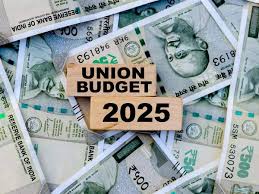When it comes to managing personal finances, credit cards and charge cards offer distinct features and benefits, appealing to different types of consumers. While both provide the convenience of making purchases on credit, the fundamental differences between them revolve around aspects such as credit limits, repayment policies, interest charges, and spending flexibility. Understanding these differences is crucial for individuals seeking to make an informed choice between these two payment options.
| Criteria | Credit Card | Charge Card |
| Credit Limit | Pre-set limit | No pre-set limit |
| Repayment Flexibility | Partial payments allowed | Full payment required |
| Interest Charges | Interest on unpaid balance | No interest, but late fees apply |
| Impact on Credit Score | Affected by missed payments and balance carryover | Affected by missed payments only |
| Availability | Widely available | Limited availability (e.g., American Express) |
| Spending Power | Limited by credit limit | Determined by internal criteria |
| Rewards and Benefits | Offers rewards within credit limit | Rewards without a credit limit |
| Financial Discipline | Flexible, but can lead to debt | Requires strict discipline |
| Income Requirements | Varies widely | Higher income thresholds required |
| Ideal for | Individuals needing flexibility | Individuals with financial discipline |
Credit Limit Comparison: Fixed vs. Flexible Limits
- Credit Cards: A defining characteristic of credit cards is the pre-set credit limit. For example, if an individual has a credit card with a Rs. 1 lakh limit, they can use the card for purchases up to that amount. If they attempt to exceed this limit, some banks permit over-limit transactions for an additional fee, while others simply decline such purchases. This limitation ensures that users maintain their spending within a manageable range, which can help with budgeting but also restricts spontaneous or large purchases.
- Charge Cards: Unlike credit cards, charge cards do not come with a pre-set credit limit. This flexibility is one of the primary advantages of charge cards, allowing cardholders to make larger purchases without worrying about exceeding a fixed limit. However, this flexibility can also be a double-edged sword, as it may lead to unplanned overspending if the cardholder fails to exercise discipline. While this can be convenient in situations where immediate funds are needed, the lack of a spending cap demands greater financial responsibility.
- Analysis: The flexibility of charge cards is advantageous for individuals with a strong financial foundation who are able to control their spending. However, for those with less financial discipline, the absence of a limit could result in overspending and potential financial strain. Credit cards, with their fixed limits, offer a safeguard against excessive spending, making them more suitable for individuals who prefer a structured budget.
Repayment Flexibility: Full Payments vs. Partial Payments
- Credit Cards: Credit cards allow users to make partial payments on their monthly bills. While this offers flexibility, it comes at a cost: interest is charged on the outstanding balance carried over to the next billing cycle. This arrangement allows cardholders to spread their payments over time but can result in accumulating debt if not managed properly.
- Charge Cards: In contrast, charge cards require the entire outstanding balance to be paid by the due date. There is no option to carry forward a balance, and no partial payments are allowed. This policy promotes financial discipline, as it forces cardholders to ensure they have the necessary funds to settle their bills each month.
- Analysis: Charge cards foster a higher degree of financial discipline by requiring full repayment, making them suitable for individuals who prefer to avoid debt accumulation. On the other hand, credit cards provide more flexibility but also carry the risk of interest charges if balances are not paid off in full. This makes credit cards ideal for individuals who may need more time to pay but who can manage the interest costs effectively.
Interest Charges: The Impact of Carrying Balances
- Credit Cards: If a credit cardholder carries an outstanding balance from one billing cycle to the next, they will incur interest charges, often at rates ranging from 3% to 3.75% per month. This can add up quickly, especially if the balance is not paid off in a timely manner.
- Charge Cards: Charge cards, on the other hand, do not charge interest on outstanding balances, but they do impose fees for late payments. These fees can vary depending on the issuer, but late payment charges are generally fixed amounts or a percentage of the balance.
- Analysis: While charge cards do not penalize users with interest charges, they impose stiff penalties for late payments, which can negatively affect a cardholder’s credit score. Credit cards, with their interest rates, provide some leeway for users who need extra time to repay, but the interest fees can become burdensome. Therefore, credit cards may be more suitable for individuals who need flexibility but are capable of managing debt.
Impact on Credit Score: Timely Payments are Key
- Credit Cards: Missing payments or carrying high balances relative to the credit limit can harm a credit score. The amount of debt carried on a credit card is a key factor in determining a cardholder’s creditworthiness.
- Charge Cards: Similar to credit cards, charge cards affect the credit score if payments are not made on time. However, since charge cards do not allow users to carry a balance, the impact of delayed payments is often more immediate, and penalties are more severe.
- Analysis: Both types of cards impact credit scores based on payment behavior. Timely payments are crucial for maintaining a healthy credit score, but charge cards may impose more immediate consequences for non-payment due to their stricter repayment terms.
Market Availability: The Global Reach of Credit Cards
- Credit Cards: Credit cards are widely available through multiple issuers, offering a range of products suited to different income levels and credit profiles. They are accepted globally and have become a standard financial tool.
- Charge Cards: Charge cards are less common, with American Express being the primary issuer of charge cards in India. While charge cards are available in select markets, they are not as ubiquitous as credit cards.
- Analysis: The limited availability of charge cards, especially in countries like India, may restrict consumer choice. While credit cards are readily accessible and offer various rewards and benefits, charge cards remain a niche product, often available only to high-income individuals.
Choosing Between Credit and Charge Cards: Personal Financial Preferences
- Credit Cards: Credit cards are ideal for individuals who require flexibility in repaying their bills. They are well-suited to those who manage their finances carefully and can avoid excessive debt accumulation. The ability to carry balances provides an additional layer of convenience in times of financial need.
- Charge Cards: Charge cards, on the other hand, are best suited for individuals who prefer to pay their balance in full each month and want the freedom to make larger purchases without worrying about a credit limit. These cards promote a higher level of financial discipline and are better suited for individuals with strong financial habits.
Balancing Flexibility with Discipline
In conclusion, the decision between credit cards and charge cards hinges on personal financial preferences and discipline. Credit cards provide flexibility, making them ideal for individuals who need more time to pay off balances but are able to manage interest charges. Charge cards, with their requirement for full payment each month, offer greater freedom in terms of spending power but require a higher level of financial responsibility. Ultimately, the choice between these two options depends on the individual’s ability to manage debt, their spending patterns, and their need for flexibility.




